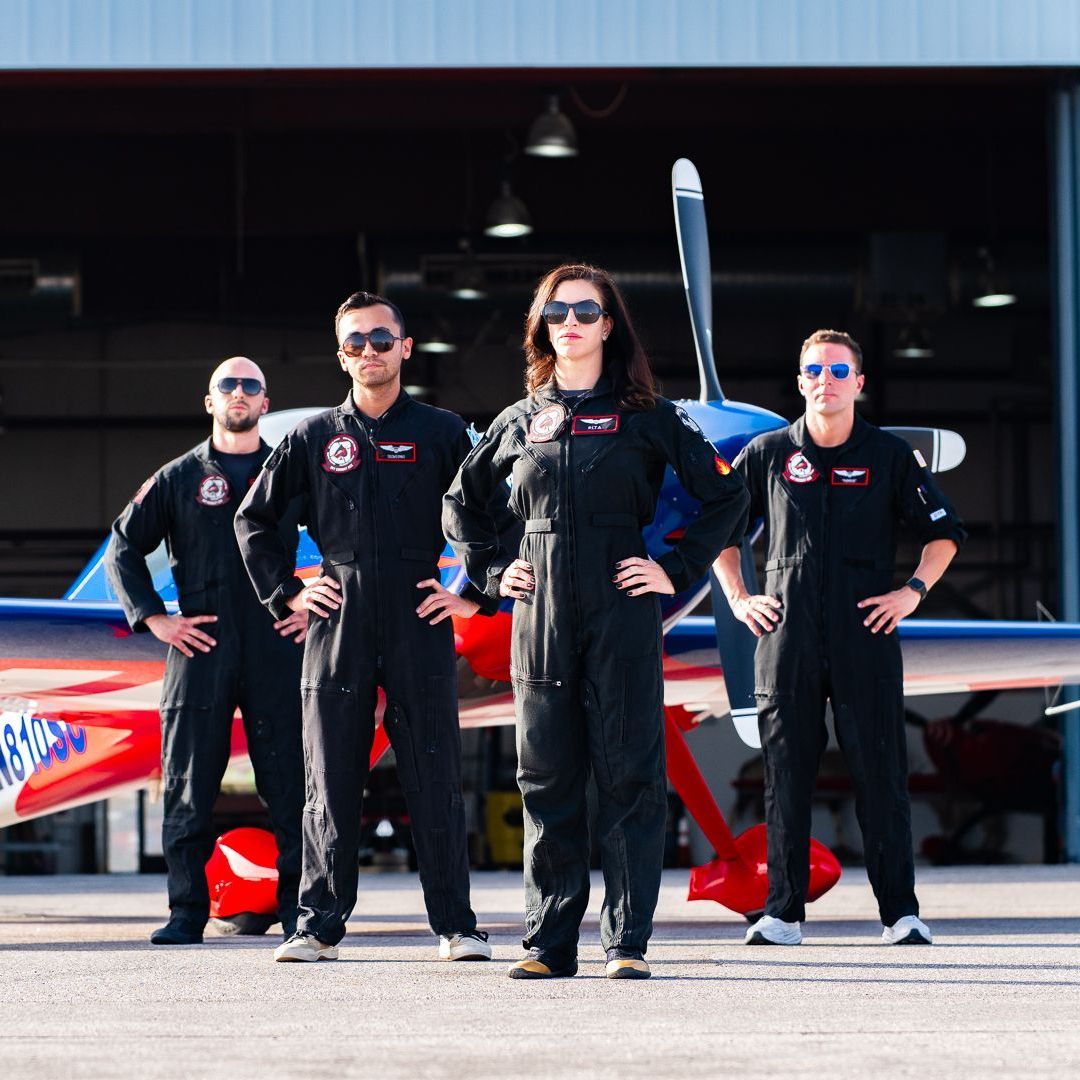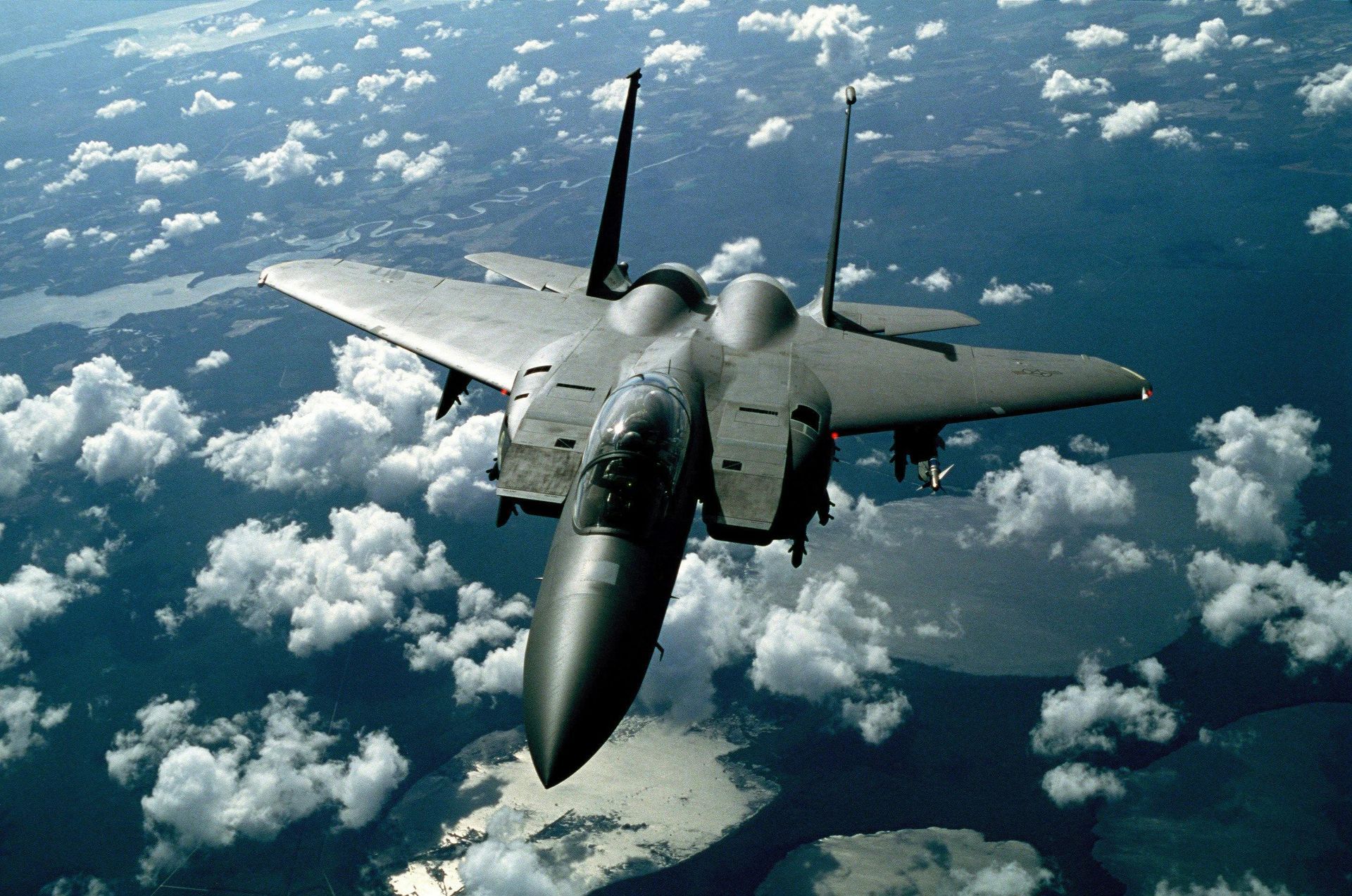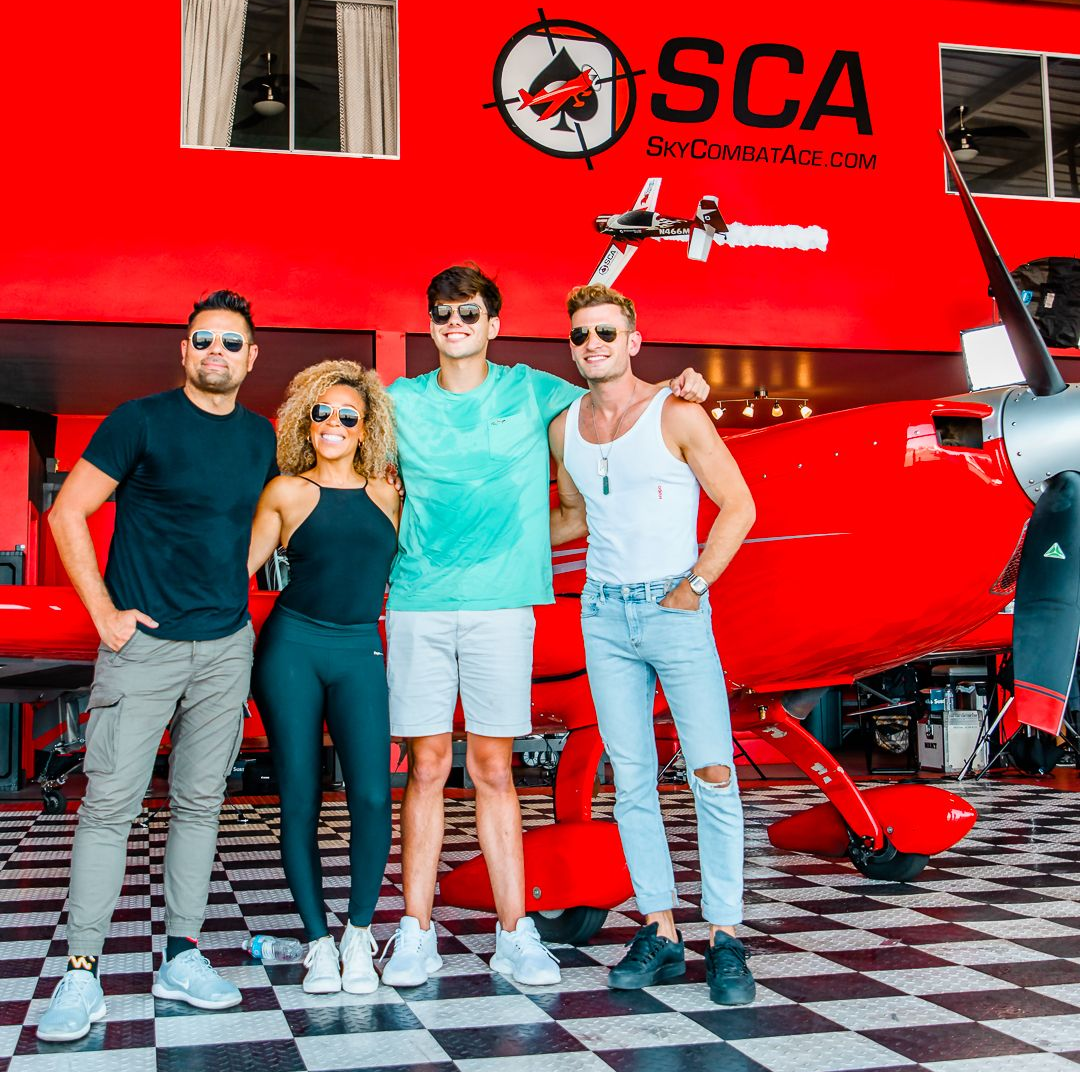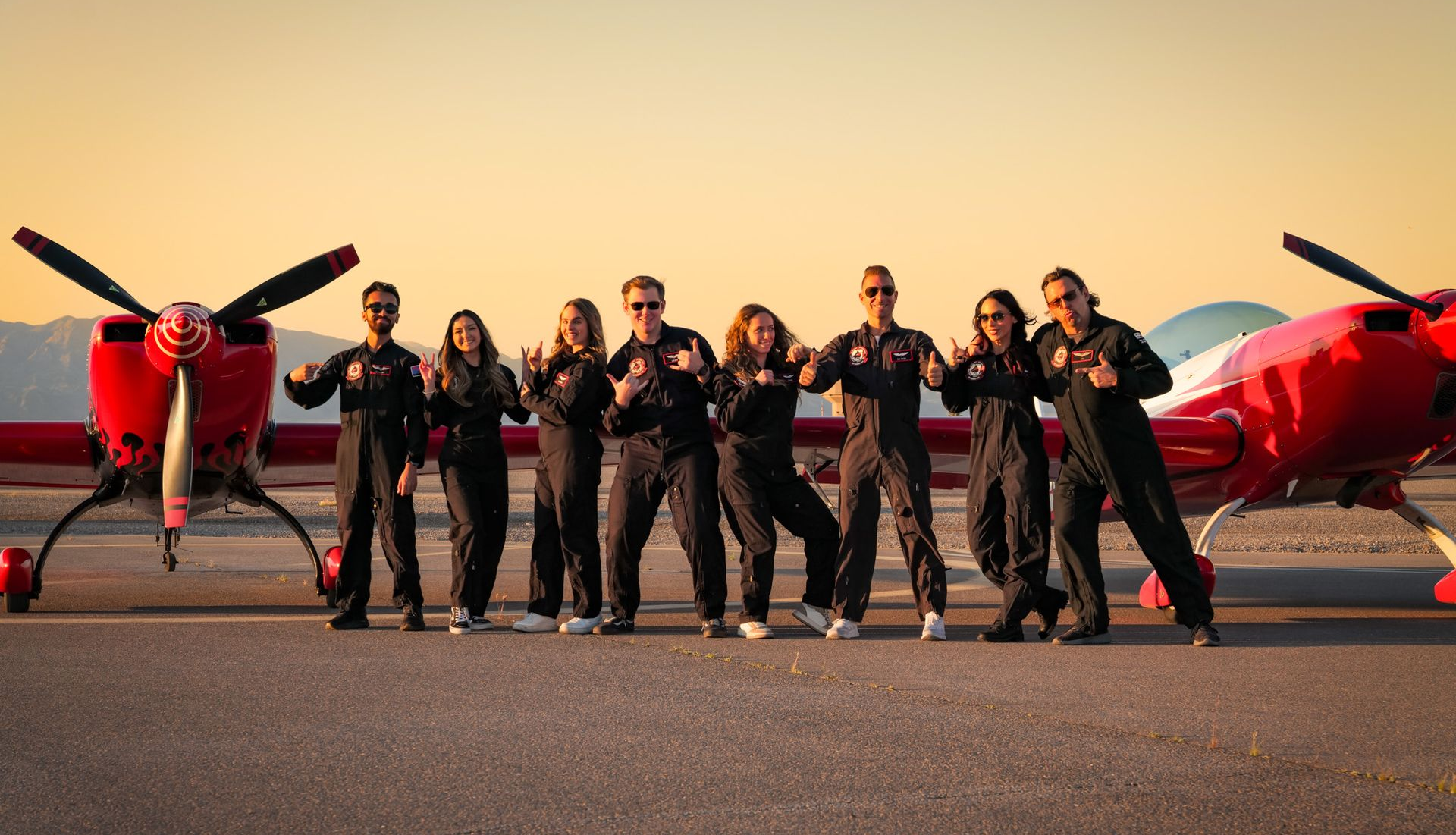Traits in Stunt Pilots
SHARE THIS POST:


Have you ever been in awe of the pilots at an air show? Maybe you’ve seen The Blue Angels fighter pilots execute their routine with a loved one in the armed forces and wondered how it’s possible to do what they do. It’s certainly not impossible, but stunt pilots must be highly dedicated to their craft. As a result, high-level training is a part of their everyday lives.
Aerobatics, or executing aircraft maneuvers at atypical altitudes, are performed in airplanes for pilot training, entertainment at air shows, and competitive sport. Are you attracted to aerobatic aviation? How did it start? How can you get started, and what will be involved if you decide to give it a go?
An Aerobatic Pilot’s skills, qualifications, and talents far exceed those required of a regular pilot. It is important to understand the demands of the job physically and mentally before deciding to become one. The men and women who practice stunt piloting have many things in common. They must be courageous, detail-oriented, responsible, intelligent, communicative, team players, and emotionally stable. Some of these traits come naturally, but of course, it requires years of training to master aerobatic maneuvers.
Professional Pilots are trained to remain in any situation, which means they need to keep calm to nail the toughest dives, rolls, or mostly any air stunt trick you can name.
Take legendary National Aviation Hall of Fame aviator Patty Wagstaff for example. Like many top-tier aerobatic aviators, she knew aerobatics was what she wanted to do with her life from the very first time she experienced an air show. However, it took her years of aerobatic competitions and training – like upset recovery training and tailwheel endorsement training just to start – before she was at the top of the field.
Team Shows and Competitions
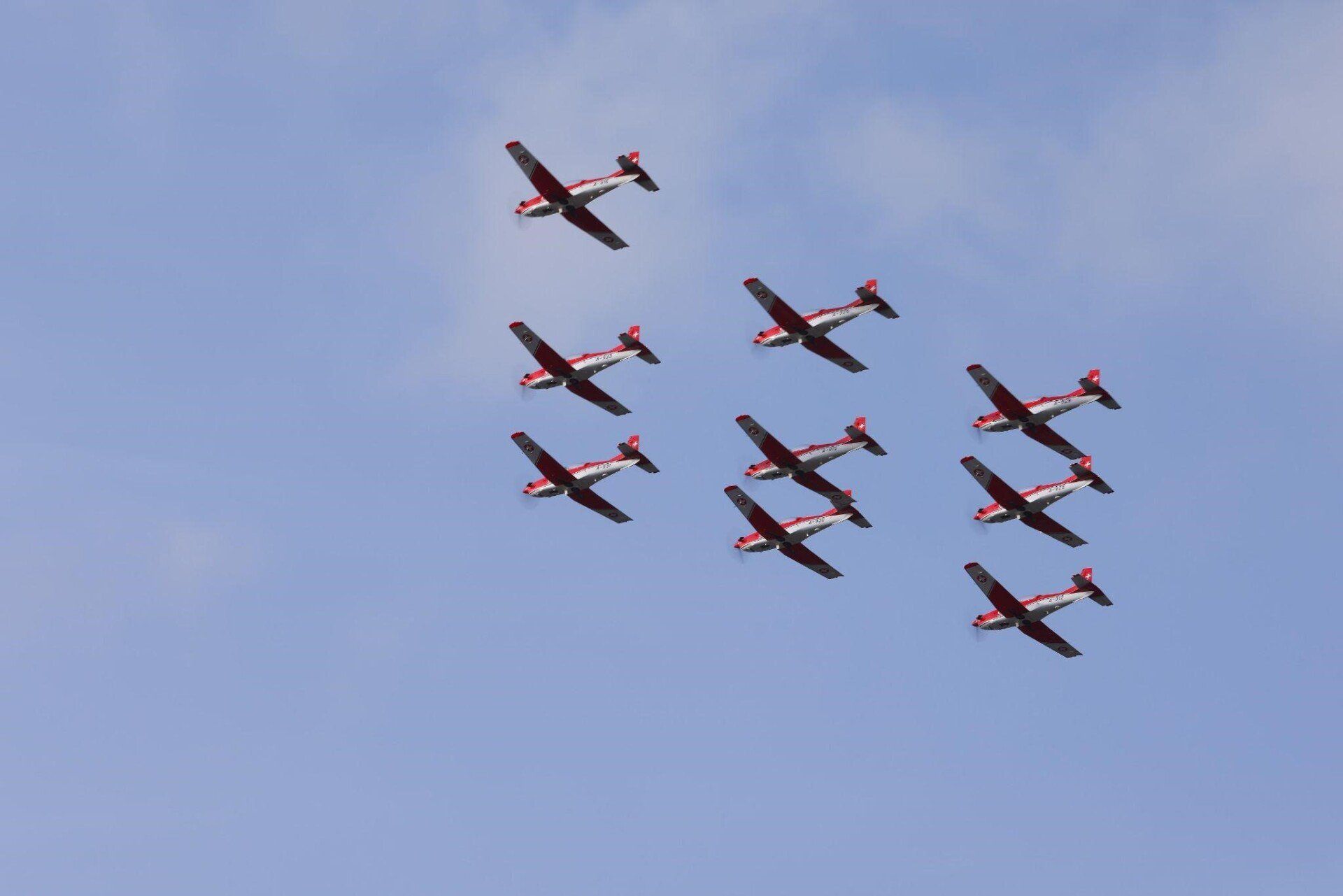
Wagstaff isn’t alone in remembering her first airshow. Most professional pilots and even most spectators usually do. It’s an experience unlike any other, usually requiring a walk from a parking lot past several hangers filled with technicians and pilots gearing up for the day’s events. A pilot’s personality is to have a honed-in focus on their craft, much like Alex Honnold preparing for a climb. You can’t miss it on your way to the bleachers or where your family will sprawl out their lawn chairs and blankets.
If you’re going to be a successful stunt pilot, you’d be well advised to take note of how each pilot is a team member, like when The Blue Angels prepare on the ground for their routine before taking to the sky. Like Kenny Chiang, each pilot has got to be totally rehearsed in their own role to create an applause-worthy team spectacle in the sky.
To achieve this level, you not only have to be highly intelligent and attentive to detail but physically fit as well.
Do You Have What It Takes?
Aviation psychology consultant Dr. Robert G. Rose posits that “Pilots generally have good social skills and good reasoning. Like many professional people, pilots have to deal with complex information, make decisions and deal with people. Thus, they tend to be bright and capable of good social interaction when called for. In these traits, you, as a pilot, are similar to managers (and consultants)...”
The best pilots are often engineer-minded in that they like to know how things work from its base upward. They know how to take things apart and reconstruct them. This is an intelligent but not intellectual approach to the world. According to The Air Line Pilots Association, pilots “are concrete, practical, linear thinkers rather than abstract, philosophical, or theoretical. On a scale that ranges from analytically oriented to emotionally oriented, pilots tend to be toward the analytical end. They are extremely reality- and goal-oriented. They like lists showing concrete problems, not talking about them.”
This, of course, doesn’t mean a deep thinker cannot be a pilot. But when you’re in the air, it’s purely the strict level of topline physics one must master to be successful. This means avoiding gray areas of thought. Rather, the laws of in-the-moment physics are what a pilot is tasked with mastering. This is where the hardcore preparation comes into play: a pilot must absolutely know the boundaries around what they are attempting to accomplish before lifting off and while executing airborne until the moment they set down on the tarmac.
Perfectionism through personal growth
Stunt piloting can be a zero-sum game, which is why the world’s very best aerobatic artists are also some of the world’s most perfection-minded individuals. This often displays itself throughout a pilot’s life, with physical fitness off the airfield that goes hand-in-hand with their performance in the sky. There is no ‘woulda, coulda, shoulda’ in flight. There is only preparation, execution, and accomplishment. According to the Federal Aviation Administration, this means that “the pilot must be aware of situations where (loss of control) can occur, recognize when an airplane is approaching a stall, has stalled, or is in an upset condition, and understand and execute the correct procedures to recover the aircraft.”
From commercial airliners to stunt pilots, this requires an elite mastery of emotions. Whether flying solo or with a team, this can come into play just like in any other professional setting. Humans frustrate one-another naturally sometimes. Or, just as often, frustrations with one’s own performance can cloud future judgment or confidence. The best pilots know how to work through these internal fears and frustrations before the next time they take to the skies.
It’s tantamount for pilot teams to master communication skills and set toxic emotions aside before taking to the sky. And, just like in any other setting, resolving these differences can build an even stronger bond between colleagues, competitors, or teammates in the long term. A former pilot of the UK’s top air team, The Red Arrows, says that character is actually the top qualification to make the team. In fact, he says a key tenet to success in the sky is knowing how to “grow through failure.”
All in all, pilots must be trained and train themselves to stay absolutely cool-headed in unforeseen and challenging situations. This requires introspective and outer perfectionism when it comes to emotions when maintaining aircraft control.
Are You Ready?
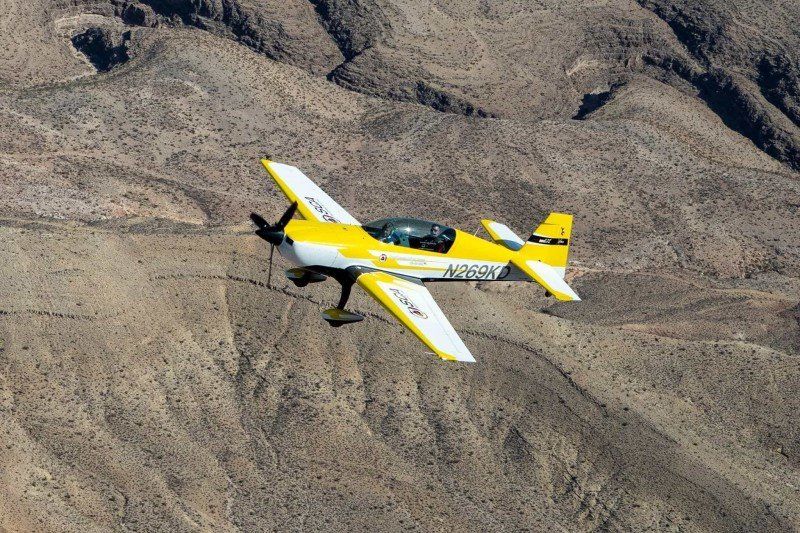
The Air Line Pilots Association has boiled down the personality traits of a pilot to 24 key characteristics:
- Physically and mentally healthy
- Reality-Based
- Self Sufficient
- Difficulty trusting anyone to do a job as well as themselves
- Suspicious
- Intelligent but not intellectual
- They like “toys”
- Good at taking things apart and putting them back together
- Concrete, practical, linear thinkers rather than abstract, philosophical, or theoretical
- More analytical than emotional
- Reality-oriented
- Goal-oriented
- Short-term goal orientation and not long-term goal driven
- Bimodal
- Tend to modify environment instead of their behavior
- Hunger for excitement
- Competitive
- Do not handle failure well
- Low tolerance for personal imperfection
- Long memories of perceived injustices
- Draw Conclusions about people at a glance rather than relying on long and emotion-laden conversation
- Avoid introspection
- Have difficulty revealing, expressing, or even recognizing feelings
- When experiencing an unwanted feeling, a tendency to mask them with humor or anger
Do you think you have these traits or can train to master them? Are you thinking of becoming a stunt pilot? If so, it’s time to sign up for your first pilot training session today!
Sources
“Practical Use of the Pilot’s Personality Profile,” Robert G. Rose, Ph.D., AvWeb February 18, 2001.
“The Pilot Personality,” Air Line Pilot Magazine, Air Line Pilots Association, 2007.
“Lessons in Teamwork from Elite Stunt Pilots,” Andy Lopata, 2022.
“Airplane Flying Handbook,” Federal Aviation Administration, Chapter 4.
The Afterburner
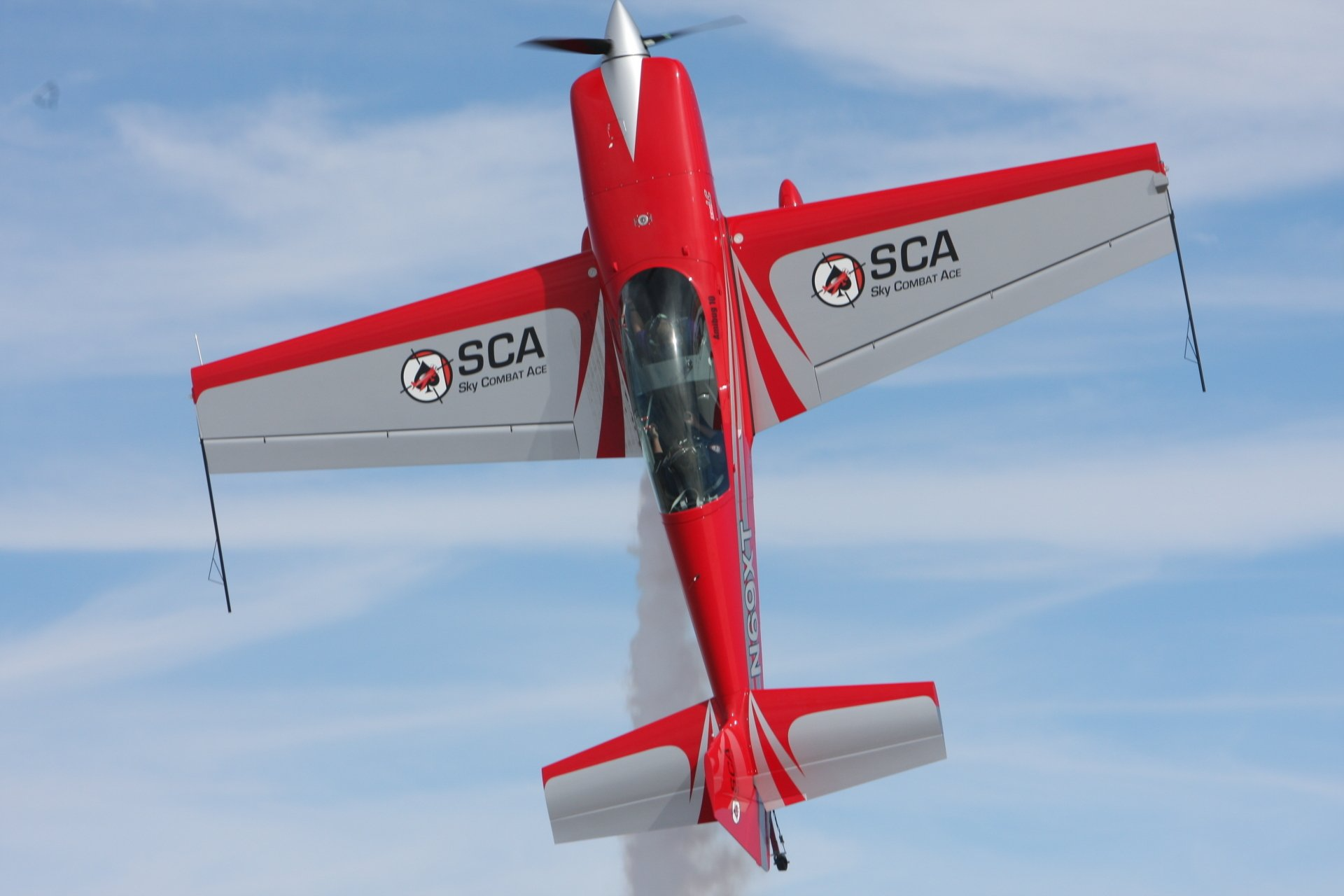
YOU GET TO FLY THE MANEUVERS
Why ride along when you can fly your own airshow routine…? Featuring both basic and advanced aerobatics, you take the controls and become your very own airshow pilot.
Sky Combat
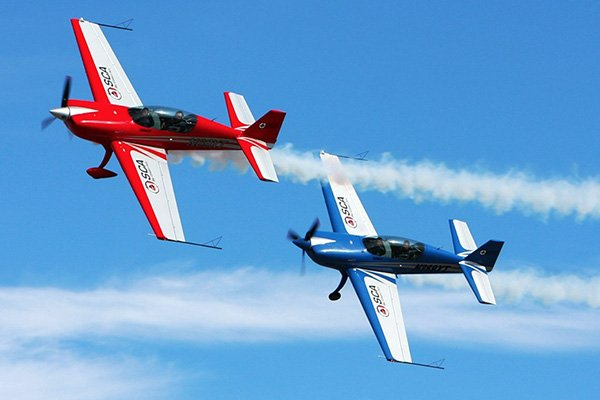
LASER TAG IN THE SKY!
Experience the thrill of air-to-air combat as you wage a battle for aerial dominance where there can be only one victor. YOU fly the plane with a trained SCA fighter pilot.
Top Gun
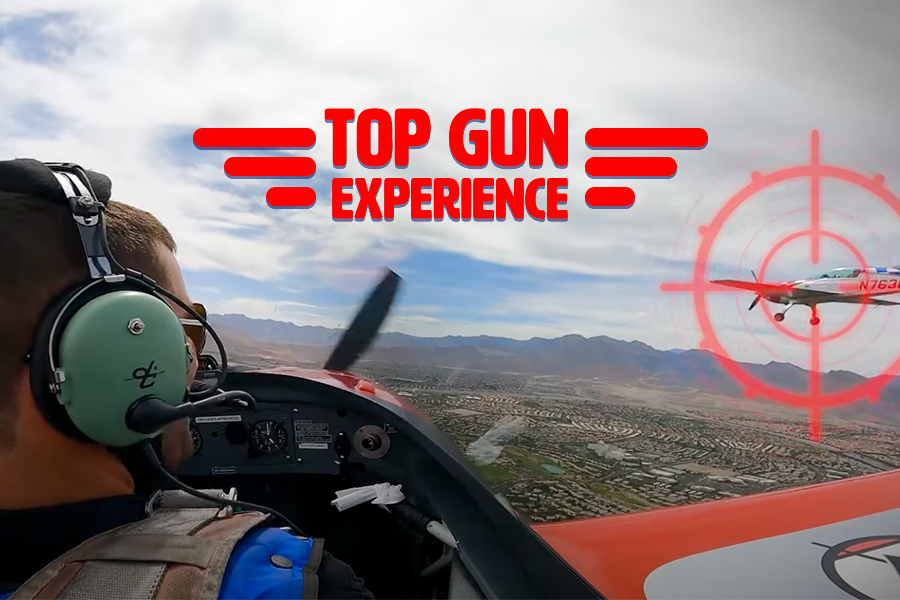
FLY LIKE A TOP GUN PILOT!
If you want to experience the most amazing, butt kicking, extreme adventure of a lifetime, then look no further than our Top Gun package!
Operation Recon
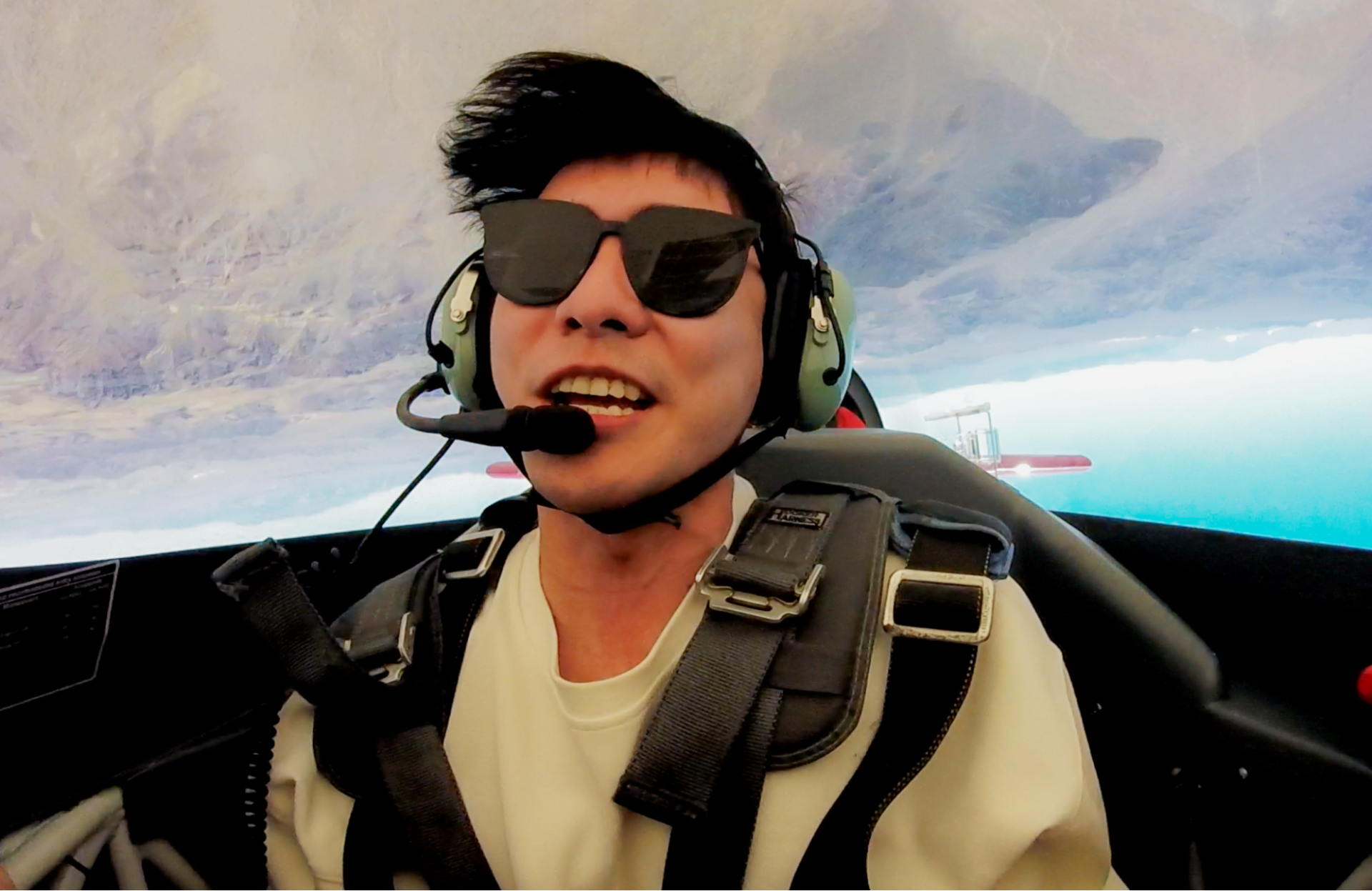
WE FLY THE MANEUVERS
Appropriate for the whole family, this is a great way to be introduced to the world of basic aerobatics. Think of it as a roller coaster without the rails.
Check These Out Next:
Fly A Real Stunt Plane!
Sky Combat Ace was created by a U.S. Air Force veteran fighter pilot who wanted to make the thrill of flying fighter jets available to anyone who feels the need for speed.
Learn to fly a stunt plane under the supervision of our highly trained, FAA certified flight instructors. No experience necessary and YOU get to fly the plane!
